2021 年中考英语-----情态动词专项课件(14张PPT)
文档属性
| 名称 | 2021 年中考英语-----情态动词专项课件(14张PPT) | 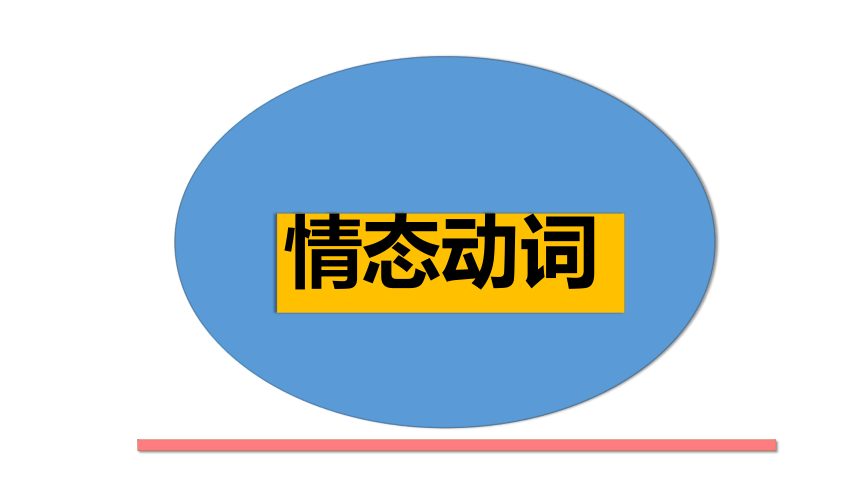 | |
| 格式 | pptx | ||
| 文件大小 | 74.6KB | ||
| 资源类型 | 教案 | ||
| 版本资源 | 人教新目标(Go for it)版 | ||
| 科目 | 英语 | ||
| 更新时间 | 2021-07-17 10:56:41 | ||
图片预览


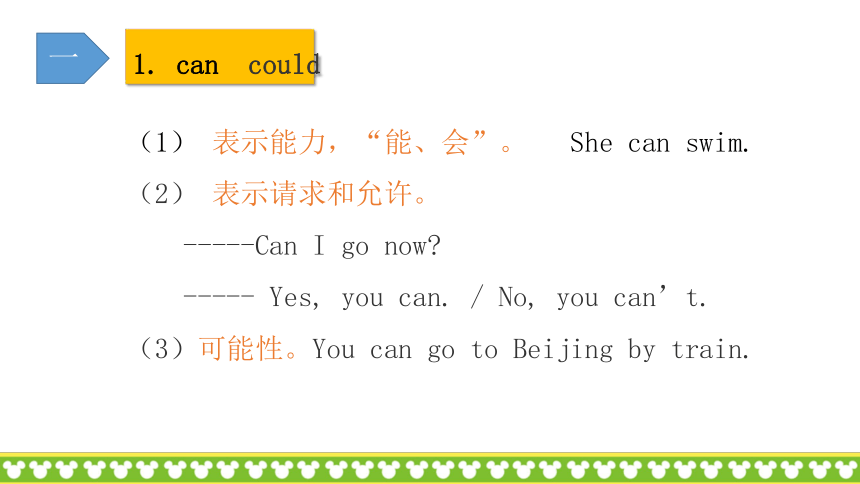
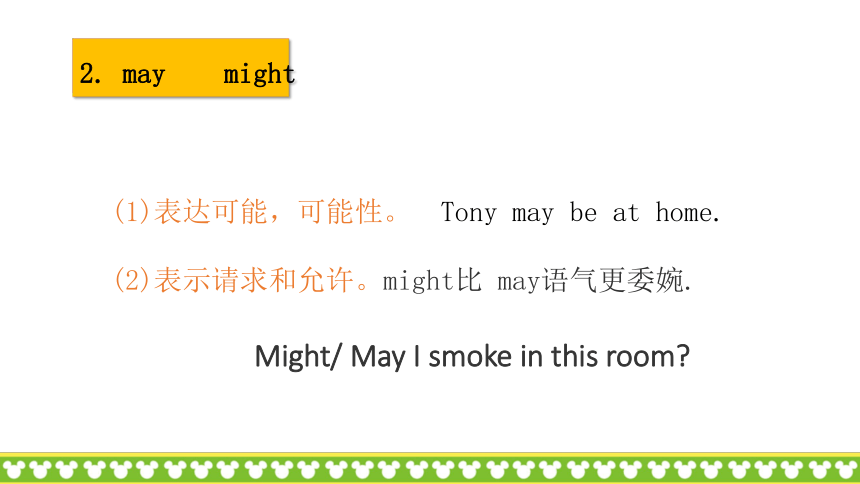
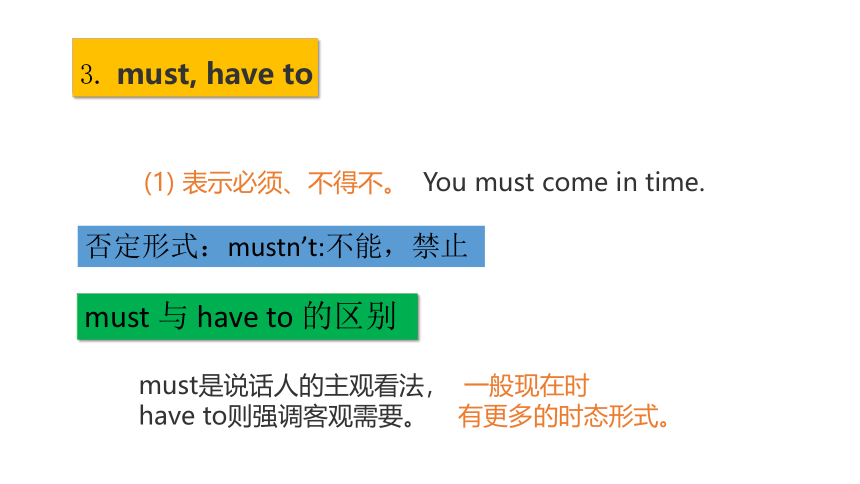
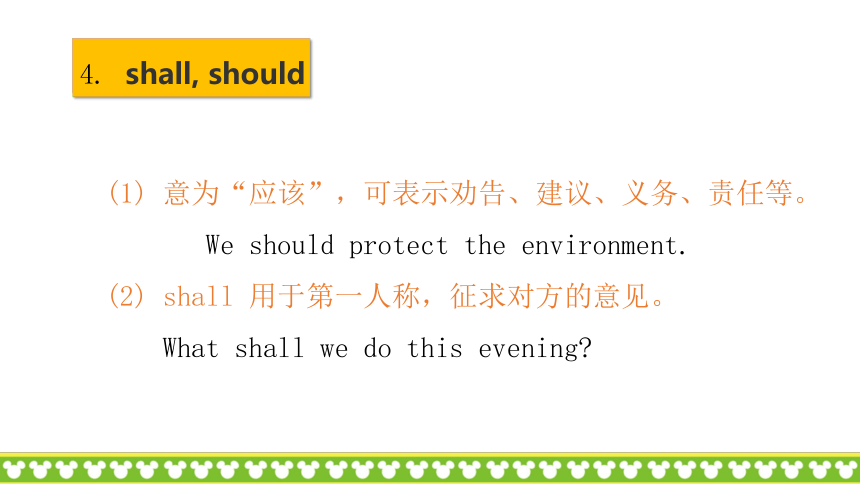
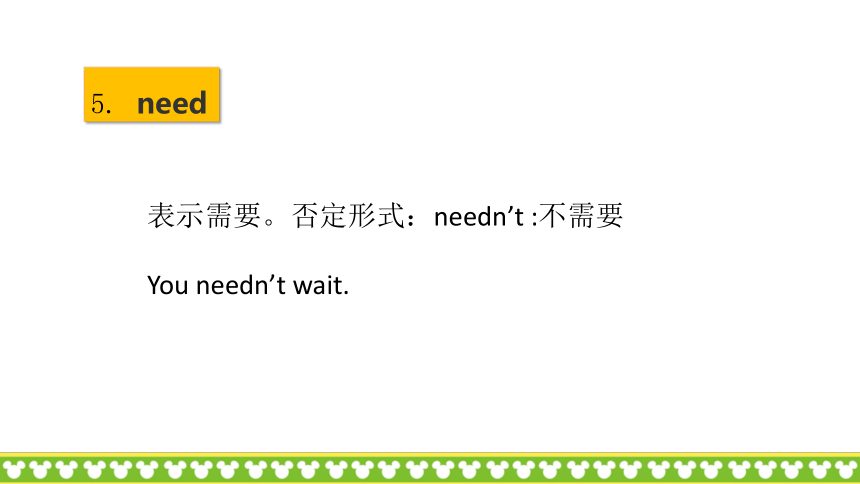
文档简介
情态动词
定义:
情态动词表示说话人对某一动作或状态的态度。
情态动词没有人称和数的变化,情态动词后必须跟动词原形。
(1) 表示能力,“能、会”。 She can swim.
(2) 表示请求和允许。
-----Can I go now?
----- Yes, you can. / No, you can’t.
(3)可能性。You can go to Beijing by train.
1. can could
一
2. may might
表达可能,可能性。 Tony may be at home.
表示请求和允许。might比 may语气更委婉.
Might/ May I smoke in this room?
3. must, have to
(1) 表示必须、不得不。 You must come in time.
must是说话人的主观看法, 一般现在时
have to则强调客观需要。 有更多的时态形式。
否定形式:mustn’t:不能,禁止
must 与 have to 的区别
4. ?shall, should
(1) 意为“应该”,可表示劝告、建议、义务、责任等。
We should protect the environment.
(2)?shall 用于第一人称,征求对方的意见。
What shall we do this evening?
5. ?need
表示需要。否定形式:needn’t :不需要
You needn’t wait.
6. will, would
1) 表示请求、建议等,would更委婉。
Will / Would you pass me the ball, please?
2) 表示意志、愿望和决心。
I will never do that again.
意为“最好”,没有人称的变化,后面接不带to的不定式,
7. had better
否定形式为:had better not
We had better go now.
二
表示推测
肯定推测最强
must
否定推测最强
can’t
-- Excuse me, whose book is this?
-- It ______be John's. It has his name on it.
A. must B. need C. can't
A
--Must we hand in our exercise- -books now?
--No, you needn' t. / No, you don' t have to.
(这种情况下, -般不用mustn' t)
考点
Must 提问的疑问句,否定回答用
No, you need n' t. / No, you don' t have to.
情态动词+动词完成式即“情态动词+ have + done分词”,表示对过去行为或动作进行推测、评论或判断。
情态动词+动词完成式
Since the road is wet, it must have rained last night.
1.____you tell me what’s happening over there ?
A. Could B. May C. Might D. Shall
2.______I have a word with the manager ,sir ?
A. Will B. Would C. May D. Can
3. — Something flying far away must be a hawk .
— No, it _______ be a hawk .
A.mustn’t B.mightn’t C . can’t D . might
practice
A
C
C
4. The man ______ be my English teacher.
He has gone to Canada.
A. might B. must C. can't
5. --Have you decided where to go for your summer vacation?
--Not yet. We ____ go to Qingdao . It's a good place for vacation .
A. may B. need C. must
practice
C
A
定义:
情态动词表示说话人对某一动作或状态的态度。
情态动词没有人称和数的变化,情态动词后必须跟动词原形。
(1) 表示能力,“能、会”。 She can swim.
(2) 表示请求和允许。
-----Can I go now?
----- Yes, you can. / No, you can’t.
(3)可能性。You can go to Beijing by train.
1. can could
一
2. may might
表达可能,可能性。 Tony may be at home.
表示请求和允许。might比 may语气更委婉.
Might/ May I smoke in this room?
3. must, have to
(1) 表示必须、不得不。 You must come in time.
must是说话人的主观看法, 一般现在时
have to则强调客观需要。 有更多的时态形式。
否定形式:mustn’t:不能,禁止
must 与 have to 的区别
4. ?shall, should
(1) 意为“应该”,可表示劝告、建议、义务、责任等。
We should protect the environment.
(2)?shall 用于第一人称,征求对方的意见。
What shall we do this evening?
5. ?need
表示需要。否定形式:needn’t :不需要
You needn’t wait.
6. will, would
1) 表示请求、建议等,would更委婉。
Will / Would you pass me the ball, please?
2) 表示意志、愿望和决心。
I will never do that again.
意为“最好”,没有人称的变化,后面接不带to的不定式,
7. had better
否定形式为:had better not
We had better go now.
二
表示推测
肯定推测最强
must
否定推测最强
can’t
-- Excuse me, whose book is this?
-- It ______be John's. It has his name on it.
A. must B. need C. can't
A
--Must we hand in our exercise- -books now?
--No, you needn' t. / No, you don' t have to.
(这种情况下, -般不用mustn' t)
考点
Must 提问的疑问句,否定回答用
No, you need n' t. / No, you don' t have to.
情态动词+动词完成式即“情态动词+ have + done分词”,表示对过去行为或动作进行推测、评论或判断。
情态动词+动词完成式
Since the road is wet, it must have rained last night.
1.____you tell me what’s happening over there ?
A. Could B. May C. Might D. Shall
2.______I have a word with the manager ,sir ?
A. Will B. Would C. May D. Can
3. — Something flying far away must be a hawk .
— No, it _______ be a hawk .
A.mustn’t B.mightn’t C . can’t D . might
practice
A
C
C
4. The man ______ be my English teacher.
He has gone to Canada.
A. might B. must C. can't
5. --Have you decided where to go for your summer vacation?
--Not yet. We ____ go to Qingdao . It's a good place for vacation .
A. may B. need C. must
practice
C
A
同课章节目录
- 词法
- 名词
- 动词和动词短语
- 动词语态
- 动词时态
- 助动词和情态动词
- 非谓语动词
- 冠词
- 代词
- 数词和量词
- 形容词副词及其比较等级
- 介词和介词短语
- 连词和感叹词
- 构词法
- 相似、相近词比较
- 句法
- 陈述句
- 一般疑问句和否定疑问句
- 特殊疑问句及选择疑问句
- 反意疑问句
- 存在句(There be句型)
- 宾语从句
- 定语从句
- 状语从句
- 主谓一致问题
- 简单句
- 并列句
- 复合句
- 主谓一致
- 主、表语从句
- 名词性从句
- 直接引语和间接引语
- 虚拟语气
- 感叹句
- 强调句
- 倒装句
- 祈使句
- 句子的成分
- 句子的分类
- 题型专区
- 单项选择部分
- 易错题
- 完形填空
- 阅读理解
- 词汇练习
- 听说训练
- 句型转换
- 补全对话
- 短文改错
- 翻译
- 书面表达
- 任务型阅读
- 语法填空
- 其他资料
